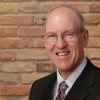You might say you’ve gone retro.
Back in the 19th century, the U.S. House of Representatives saw a 45% turnover each election, on average. On 15 different occasions back then, more than half of the House was new after an election, according to Josh Huder, a senior fellow at the Government Affairs Institute at Georgetown University.
If you look closely at the Cook website, only 28 districts nationwide, out of 435, are considered tossups this year. Only a few more are expected to change hands from one party to another.
So, congratulations. If you live anywhere from Olympus Cove on a meandering line down past Nephi to Levan or Mount Pleasant, your vote might tip the balance.
Now for the big question. Is this a good thing?
That’s not one with an easy answer, especially in an age when politically savvy people seem to be attacking the art of political district-drawing everywhere. In Utah, an independent commission will take a stab at this next year, as will a committee set up by the Legislature. Lawmakers will choose between the two, but the process ought to generate some interesting questions.
For example, what makes for good district drawing?
The Brennan Center, a nonpartisan policy institute, puts it this way: “A good redistricting process should help a community secure meaningful representation. Many states consider ‘communities of interest’ when drawing their districts and that’s a good place to start.”
Which sounds a lot like districts where races won’t be decided by 694 votes.
A community of interest is hard to define. Often, it could be a racial or ethnic group. It could, as the Brennan Center said, be people of similar interests that go beyond politics. A bunch of rural people, for example, would probably prefer different representation than what a bunch of city folks would prefer.
But in reality, communities of interest often translate into communities with similar political beliefs.
Which describes what America is becoming.
Three years ago, the website Fivethirtyeight.com published a map showing how Americans have been voting with their feet over several decades, moving to places where people think like them -- communities of interest, if you will.
People who live in counties where elections are decided by what the website calls “extreme” landslides for one political party or the other went from 4% in 1992 to 21% in 2016. Only 303 of the nation’s 3,113 counties or equivalents had a single-digit difference in the presidential race of ‘16, compared with 1,096 in 1992, a year when the White House was decided by a wider overall margin.
This kind of polarization leads to problems. Fivethirtyeight.com points to one of them, which is that children grow up without being exposed to opposing political viewpoints that might keep them from treating political foes as mortal enemies.
Landslide elections also give people less incentive to vote, with many figuring their ballots won’t matter.
But the bigger problem is that representatives elected in landslide districts have less incentive to work with lawmakers from the opposite party. Doing so would risk losing votes at home. Often, it’s easier not to solve problems at all, blaming the other side for failure.
On the other hand, those who represent competitive counties, such as Utah’s Fourth District, have every incentive to reach across the aisle with more moderate positions, pulling votes away from their opponents.
Ultimately, this translates into civility, or lack thereof, in political dialog everywhere. So, yes, competitive districts are good.
Next year, after the 2020 Census is finished, Utah’s independent boundary commission will draw districts based on preserving communities and not prioritizing the re-election of incumbents. Lawmakers will draw theirs based on factors that include political considerations.
It’s worth watching what happens to the fourth congressional district.
For now, at least, the folks who live there can enjoy a rare old-fashioned crack at a race that could turn on the slightest of details.

 RSS Feed
RSS Feed

